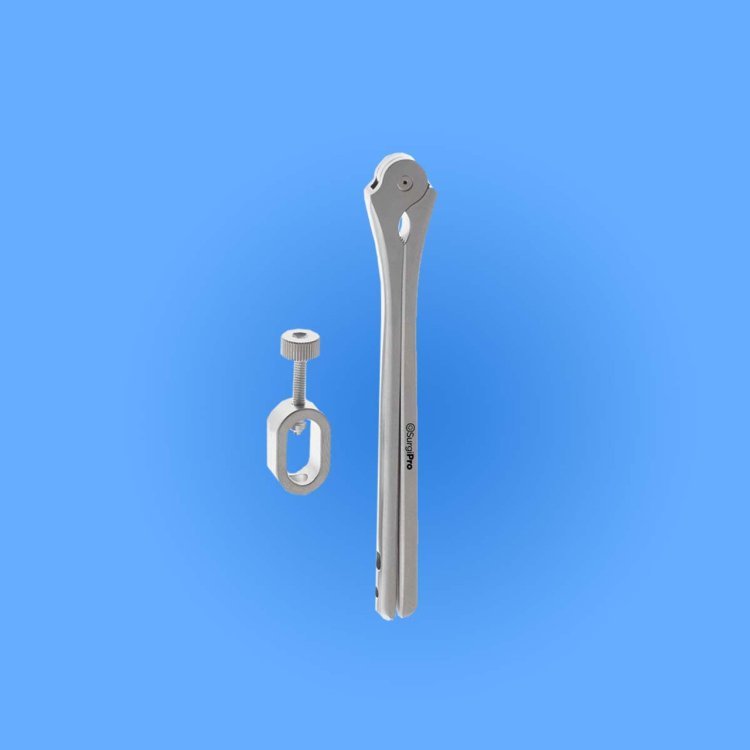Choosing the Right Intestinal Instruments for Surgical Procedures
Discover the essential factors to consider when selecting intestinal instruments for surgical procedures. From material durability to sterilization compatibility, this guide covers everything you need to know to ensure optimal outcomes in gastrointestinal surgeries.

When it comes to surgical procedures involving the intestines, selecting the appropriate intestinal instruments is paramount for ensuring successful outcomes and patient safety. These instruments play a crucial role in various procedures, from intestinal resections to laparoscopic surgeries. The right tools not only enhance the surgeon's precision and efficiency but also contribute to minimizing postoperative complications. In this comprehensive guide, we will delve into the factors to consider when choosing intestinal instruments, highlighting their types, functionalities, and importance in modern surgical practice.
Understanding Intestinal Instruments
Intestinal instruments encompass a wide range of tools specifically designed for procedures involving the intestines, including the small and large intestines. These instruments are crafted with precision and durability to withstand the demanding nature of gastrointestinal surgeries. From graspers and scissors to retractors and staplers, each instrument serves a unique purpose in the surgical process, facilitating tissue manipulation, cutting, suturing, and hemostasis.
Factors to Consider
- Material and Durability: Opting for high-quality materials such as stainless steel or titanium ensures the longevity and reliability of intestinal instruments.
- Precision and Ergonomics: Surgical procedures demand precise movements and control. Therefore, selecting instruments with ergonomic designs and fine tips enables surgeons to maneuver with accuracy and minimal tissue trauma, ultimately enhancing patient outcomes.
- Versatility and Adaptability: The versatility of intestinal instruments is vital, especially in complex surgical scenarios. Instruments that can adapt to various surgical approaches and techniques empower surgeons to address diverse patient needs effectively.
- Sterilization Compatibility: Intestinal instruments must be compatible with standard sterilization methods to ensure aseptic conditions in the operating room. Instruments that can withstand autoclaving or sterilization through other methods without compromising their integrity are essential for surgical safety.
Types of Intestinal Instruments
- Graspers and Forceps: These instruments are used for grasping and holding tissues, facilitating manipulation and exposure during intestinal surgeries.
- Scissors and Dissectors: Designed for cutting and dissecting tissues, scissors and dissectors come in various shapes and sizes to accommodate different surgical requirements.
- Retractors: Retractors are instrumental in providing optimal exposure of the surgical site by holding tissues or organs aside.
- Staplers and Suturing Devices: Staplers and suturing devices are essential for creating anastomoses, closing incisions, and achieving hemostasis in intestinal surgeries.
FAQs
What precautions should be taken during the sterilization of intestinal instruments?
Intestinal instruments should undergo thorough cleaning to remove organic debris before sterilization. Proper packaging and loading techniques must be followed to ensure effective sterilization and prevent contamination during storage.
How can surgeons ensure the proper maintenance of intestinal instruments?
Regular inspection, cleaning, and lubrication are essential for maintaining the functionality and longevity of intestinal instruments. Any signs of damage or wear should prompt immediate repair or replacement to prevent compromised performance during surgeries.
Are there specialized intestinal instruments for minimally invasive procedures?
Yes, advancements surgical instrument technology have led to the development of specialized laparoscopic and robotic intestinal instruments. These instruments are designed to facilitate minimally invasive approaches, offering enhanced visualization and maneuverability.
Conclusion
Choosing the right intestinal instruments is fundamental for achieving optimal outcomes in intestinal surgeries. Surgeons must carefully evaluate factors such as material quality, precision, versatility, and sterilization compatibility when selecting instruments for their procedures. By investing in high-quality and appropriate instruments, surgeons can enhance their surgical capabilities, minimize complications, and ultimately improve patient care in the realm of gastrointestinal surgery.
What's Your Reaction?











![Blog Submission Sites 2024 [High DA]](https://blognow.co.in/uploads/images/202306/image_100x75_6494a03eaff5e.jpg)
![Article Submission Sites 2023 [High DA & PA]](https://blognow.co.in/uploads/images/202307/image_100x75_64c4181f17036.jpg)
![Classified Submission Sites 2023 [High DA & PR]](https://blognow.co.in/uploads/images/202306/image_100x75_649dcd5260808.jpg)




![Article Submission Sites 2023 [High DA & PA]](https://blognow.co.in/uploads/images/202307/image_750x415_64c4181f08ed5.jpg)
![Classified Submission Sites 2023 [High DA & PR]](https://blognow.co.in/uploads/images/202306/image_750x415_649dcd5247eeb.jpg)
![Blog Submission Sites 2024 [High DA]](https://blognow.co.in/uploads/images/202306/image_750x415_6494a03e96bfa.jpg)